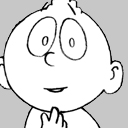Measuring and Designing Emotions
Tuesday, February 26th, 2008Pieter Desmet has done important work on modeling product emotions. A few key ideas from his work:
· Product experience is made up of three components including aesthetic pleasure, attribution of meaning, and emotional response (follows Hekkert)
· Individual differences in emotional response to products cannot be explained by age or gender but more by culture (Dutch, Japanese and US were compared in his dissertation)
· Individual’s emotional responses to products vary but the process of eliciting emotions is universal so you need to understand context (goals, standards, attitudes of users)
He has developed and successfully used a tool for measuring emotional reactions that queues on 14 different states including:
Unpleasant: Indignation, Contempt, Disgust, Unpleasant surprise, Dissatisfaction, Disappointment, Boredom and Pleasant: Desire, Pleasant surprise, Inspiration, Amusement, Admiration, Satisfaction, Fascination.
Feedback is collected via the use of cartoon/icon expressions of the emotion and reports that you have, somewhat have or do not have that emotion when interacting with the product.
This is one of the few research-based and field tested tools for designing emotions that I have found. Watch for a review of his book, Designing Emotions, in this blog later in the year.
